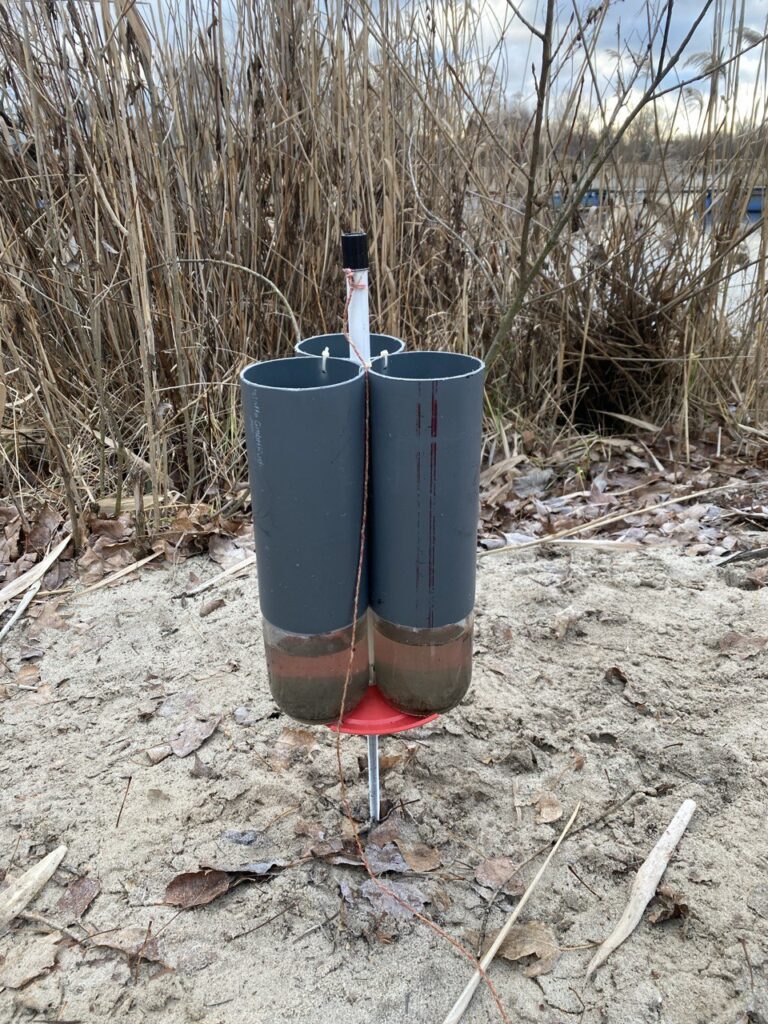Suspended Sediment Trap
The SUNDANSE project is developing Sustainable Sediment Management solutions for the Danube River – Black Sea system. One of the project’s tasks is to strengthen sediment monitoring in the Danube basin. This article introduces you to a lightweight and compact “Suspended Sediment Trap” for trapping suspended sediments, developed by the team of the National Ecological Center of Ukraine. This effective device will be used to study the sediments of the Danube river.
Strengthening Danube basin monitoring with Sediment traps
The high information content of sediment traps makes them a practical tool for obtaining information when studying both the spatial and temporal distribution of sediment in water bodies. In the biological aspect, it is used to determine the rate of sedimentation based on studies of the process of settling suspended matter in the cylinders of the device. In the environmental aspect, it is used to assess the content of pollutants in the sediments
accumulated by the trap.
Therefore, its design allows researchers to gain valuable insights into:
- Sedimentation Rates: By studying the settling of suspended matter within the trap’s cylinders, scientists can determine the rate at which sediment accumulates.
👉 This is vital for understanding the river’s natural processes and potential impacts of human activities. - Pollutant Assessment: The trapped sediment acts as a natural collector of pollutants present in the water column.
👉 Analysing the accumulated material allows researchers to assess the presence and concentration of environmental contaminants, including microplastics and micro-organic pollutants.
Practical Design for Comprehensive Sediment Studies
Years of river monitoring practice have highlighted the need for sediment traps that are not only reliable and effective but also easy to deploy and handle. The National Ecological Center of Ukraine has effectively addressed these requirements with a simple yet ingenious design, protected by a Ukrainian patent. Key features of this trap include:
- Lightweight and Compact: Facilitating easy transportation and deployment in various riverine environments.
- Cost-Effective and Versatile: Its simplicity ensures low manufacturing costs and adaptability to diverse research objectives.
- Inert Glass Container: The half-liter glass container used for the sampler is chemically inert, easy to clean, and transparent, allowing for immediate visual analysis of the collected sediment.
- Optimized Cylinder Design: The plastic cylinder with a 90 mm diameter is specifically designed to perfectly accommodate the glass container. This clever integration allows the glass jar to serve as both a liner within the sedimentation cup and a secure vessel for storing and transporting collected samples to the laboratory. The container’s volume is ample for most analytical studies while remaining conveniently portable.
Long-term monitoring for a healthier Danube ecosystem
Sampling of settled sediment is carried out according to the methodology tested in the practice of long-term field observations of sedimentation flows within the coastal areas of river basins. Sampling from traps usually takes place in the range from two weeks to a month, depending on the research objectives, the speed of sedimentation processes and the amount of substance required for laboratory analyses.
To conclude
The “Suspended Sediment Trap” developed by the National Ecological Center of Ukraine represents a significant step forward in enhancing sediment monitoring capabilities within the SUNDANSE project. Its practical design, coupled with its ability to provide crucial data on sedimentation rates and pollutant content, makes it an invaluable tool for achieving #sustainable sediment management and ultimately contributing to a healthier Danube River – Black Sea ecosystem.
Stay tuned for more updates on SUNDANSE’s progress in safeguarding this vital resource!
